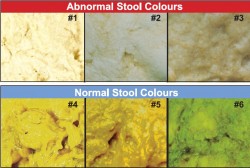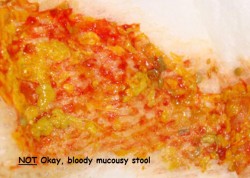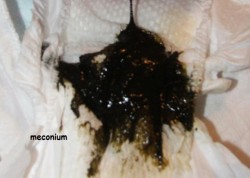Client Area
Normal Newborn Behaviors
AOM Handout on normal newborn behaviour
This is a handout for normal newborn behavior, it is general, if you have concerns please page your midwife
When you should page AFTER the baby is born
Labour is an obvious time to page your midwife but following the birth women struggle with what constitutes a “good” or appropriate reason to page. This list should help with that. Ultimately, any time you are concerned and feel you need medical attention you should page: 1-800-805-9363
Mother:
• If you have a fever over 38C
• You have severe uterine pain with fever and foul smelling bleeding
• Your breasts have a red area that is hot/hard and you have a fever
• If you have painful urination and suspect a bladder infection
• If your nipples are severely damaged and you can no longer latch your baby
• If you have severe depression and have thoughts of harming yourself or your baby
Newborn:
• If your baby has a temperature over 38C and they are appropriately dressed (one layer of clothing more than you are comfortable in)
• If you are unable to latch you baby and it has been more than 6 hours from the previous feed. (newborns normally nurse at least 8x in 24hrs but will often have one long stretch of 3 to 6 hrs in 24)
• If the baby is more than 4 days of age and has less than 3 wet diapers in 24hrs or they have rusty crystals in their diaper.
• If the umbilical area (skin around cord) is red and swollen. It is normal for the cord to smell and ooze and sometimes bleed, this is not an infection.
• If the sclera (white part of the eye) is red and irritated looking. Newborns often have a yellowish discharge from their eyes which can get crusty, this is not an infection and should just be wiped with warm water regularly.
Normal colours for Baby poop
How to reach us: URGENT and NON-URGENT Situations
HOW TO CONTACT YOUR MIDWIVES
All non-urgent questions, concerns, and requests for prescription refills should be directed to the clinic at 705-523-8000. Calls are normally returned within one business day.
Paging should be reserved for emergencies or urgent situations. For example: labour, significant bleeding, ill newborns, etc.
When you have an urgent situation, page your midwives as follows:
1) Phone the paging service at 1-800-805-9363
2) Ask the operator to page BOTH your midwives (See teams below).
3) Give the operator your first and last name*, your telephone number, and tell the operator the reason for your page, for example “I think I’m in labour”.
4) One of your two midwives will return your call in 15-20 minutes. Please keep the phone line clear.
5) If you do not hear back within 15-20 minutes phone the paging service again, tell them you did not hear from a midwife, and ask them to re-page. Ensure you again leave your full name, number, and the reason for your call.
6) If you are more than 20 weeks pregnant and think you need to go to the hospital, please page your midwives first. Hospital Policy dictates that an attending midwife will see you; many concerns can be dealt with on an out-patient basis.
*Please use the last name that is on your Health Card even if this is not the name you normally use.*
During your pregnancy and 6 weeks postpartum your midwives are the main caregivers for you and your baby. If you have urgent concerns for you or your baby you should contact them either at the clinic, or for emergencies by pager. One of them will assess the situation and decide what care is needed, including if specialist care is required.
PLEASE REMEMBER TO ASK FOR YOUR MIDWIFE’S FULL NAME ALWAYS LEAVE YOUR FULL NAME AND PHONE NUMBER IF YOU PAGE MIDWIVES DO NOT CARRY CLIENTS’ FILES WITH THEM.
Please keep your line free after you call 🙂
TEAMS:
Debbie Younger and Lynne Sullivan
Shelley Ann Clarke-Dolby, Trina Desjardins and Jillian Ashick-Stinson
Meredith Crowder and Sara Vildis
Elizabeth (Buffy) Fulton-Breathat, Keatha Walsh and Dana Cuddy
Feeding your newborn baby
The World Health Organization recommends babies are exclusively breast-fed for the first 6 months of life, and that breastfeeding continues for 2 years or more. Not every women will choose to follow this recommendation. Click on the links below to read more about methods of feeding
Baby’s Second Night
You have made it through your first 24 hours as a new mother. Even if you have other children, you are still a new mother. Now it is your Baby’s Second Night.
This is the time your baby knows that he is no longer in your warm tummy where he spent the last nine months. It is scary out here! He cannot hear your heart beat and the other sounds he heard when he was inside you. Instead, he is in bed all alone.
During the day, many people have held your baby. He is getting used to new noises, lights, sounds and smells. He has also found his own voice. Each time you take him away from your breast and warm body he cries loudly! He is telling you that he was very happy being close to you.
When he cries, you put him back on your breast. He is happy and feeds for a short time and then goes to sleep. When you put him back to bed, he cries again. New mothers think this happens because the baby is hungry and “not getting enough milk”. This really happens because he wants to snuggle up to your warm body. This waking up and sleeping pattern can go on for hours and is tiring for you and your baby.
You can help your baby by letting him sleep at your breast after a good feed. Do not burp or move him. Relax and snuggle for a while. You will see your baby go into a light sleep first. If he is moved now, he will wake up. As you snuggle longer, your baby goes into a deeper sleep. Watch your baby to learn the signs of deep sleep. This is when you can move your baby to bed. If he starts to wake, this is a sign that he was not in a deep sleep, so wait a while longer.
You can also let your baby suck on his thumb or fingers any time he wants to. He did this in your tummy before he was born. If his hands are covered with mittens, this can be strange to him. He may be saying, “Where are my hands?” He has no way of soothing himself with mittens on. Your baby needs to be able to touch and feel. When he puts his hands on your breasts, this helps increase your supply of milk. So take the mittens off and let him get to his hands. If he scratches himself, do not worry, he will heal. After all, he had fingernails when he was inside you and was fine.
After Baby’s Second Night, there may be times when your baby does not go to sleep. This may be when you had a busy day going to the doctor, going out shopping or visiting grandparents. Your baby is just saying that he wants some snuggle time at the breast. For your baby, your breast is “home”.
Note: We use the word “he” in this document. We feel this is simpler than writing “he or she” every time. Adapted with permission from Jan Barger RN, MA, IBCLC Lactation Education Consultants
Your baby’s first 24 hours of life
- Your baby needs to eat at least 5 times in the first 24 hours of life. He or she should suckle for at least 20 minutes at each feed. It is not necessary to switch breasts. In order to achieve this you should attempt to feed the baby at least every 3 hours. If he/ she acts hungry more often then latch the baby more often. Your baby is getting important colostrum (the first milk), which is rich in important calories/antibodies. **Every time you feed your baby empty your bladder and check that your bleeding is not too heavy.
- You should expect the baby to have 1 wet diaper and 1 poopy diaper in the first 24hrs. The first bowel movement is black like molasses/tar and is called meconium; olive oil or Vaseline on the baby’s bum will help when wiping this off. This amount of output tells us that the baby’s kidneys work and that he/ she has had enough to eat.
- Your baby is learning to regulate his/her body temperature in the first 24 hours of life. For this reason you should keep a hat on your baby on the first day and the baby should wear one layer of clothing more than you are comfortable wearing.
- It is normal for the baby to have bluish or pale hands and feet that feel cool for the first day of life. Socks and mittens may help with this. It is more important that the baby’s body feels warm to the touch and that his/her face and torso are pink.
- The baby’s umbilical cord should be kept clean, dry and out of the diaper. Exposure to air helps healing. There is no need to put alcohol on the stump as this can delay normal drying.
The second 24 hours of life:
This is your second day of bed rest. You should try and air dry your perineum as much as possible and monitor your bleeding closely. Drinking lots and emptying your bladder often is very important. Don’t forget to eat well to encourage tissue healing and milk production.
- Your baby needs to be fed at least 8 times today. This means your baby will likely feed every 2-3 hours. The longest your baby should ever be left to sleep is 4 hours. You should try burping the baby after each feed. Breast fed babies may not burp … so don’t worry if unsuccessful.
- You should expect at least 2 wet diapers today and 1 or more black stools in the second 24hrs of life. You may notice some reddish crystals in the baby’s wet diaper (it may look “rusty”). These are uric acid crystals and are normal.
- It is normal for the baby to look a little yellow towards the end of the second day of life. Your midwife will talk to you about normal jaundice.
- The umbilical cord stump should be kept dry. You may notice moisture or spots of blood. Dab away any moisture around the stump with a soft cloth or use a hairdryer on a cool setting to keep it dry and promote healing.
The third 24 hours of life:
- Your baby will likely seem hungrier today, as he/she is eager for the colostrum to change to breast. The baby will likely eat every 2 hours today. He/ she should be encouraged to suckle for at least 20 minutes on one breast (many babies will want to eat for much longer). *Your breasts will likely feel larger and fuller by the end the third day. The shift in hormones, combined with being overtired can make you feel very emotional and weepy today … this is normal, and will improve.
- You should expect at least 3 wet diapers today and 2 or more bowel movements, which will vary in colour (black, brown, green, or yellow). The baby is likely to appear more yellow today. This is a normal time for jaundice to appear and nursing often will help it to clear. You can also place the baby close to a sunny window to help clear
the jaundice. - The baby’s umbilical stump may be oozing and have an odour today … this is normal. Air drying or blow-drying will help, dab any moisture away with a soft cloth.
- Today is the day that we usually do the PKU and thyroid testing (heel prick test).
After the third day:
You can start resuming your normal activities. Always make sure your bleeding is less than one pad per hour. If your bleeding increases you are doing too much too soon.
- Now that your milk volume has increased the baby will likely eat every 2-3 hours and might have one time a day where he/ she sleeps for 4 or 5 hours. The baby needs to eat about 8-12 times a day and should suckle for at least 20 minutes on one breast. Most babies feed from one breast per feeding to ensure intake of hindmilk. Remember; start with the opposite breast at the next feeding.
- Your baby will need to be burped more often as he/she is swallowing more air and may spit up more often.
- You can expect that your baby will pee at least 6 times a day and have several large bowel movements in a day. This tells you that your baby is getting enough to eat. Breast fed bowel movements are yellow and very runny and sometimes have small curds in them. Stools are never formed.
- If your baby is jaundiced it will start to fade, and the baby will appear less yellow every day. The whites of the baby’s eyes are usually the last to clear and may appear yellow until the baby is 7-10 days of age.
- The umbilical stump is continuing to dry and heal. You may notice tiny spots of blood on the diaper as the stump separates much like a scab. This is normal. The stump usually falls off between days 5-10, however this can vary.
- Your baby will start to have more periods of being awake, quiet and alert.



